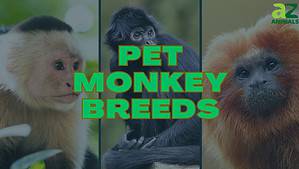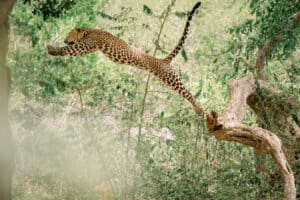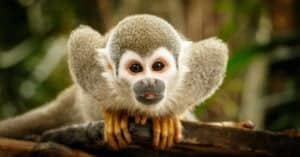When you think of a monkey, you probably picture a furry animal with long arms swinging through trees. Monkey taxonomy (classification) is a lot more complicated than that. Monkeys are a type of primate; despite some basic similarities, they are a diverse group of animals. They can be categorized into two families: the Old World monkeys and the New World monkeys. These two groups of monkeys have evolved independently for at least 30 million years, so it’s no wonder they are no longer the same. Here, we examine the seven key differences between Old World and New World monkeys.
What Are Old World Monkeys?
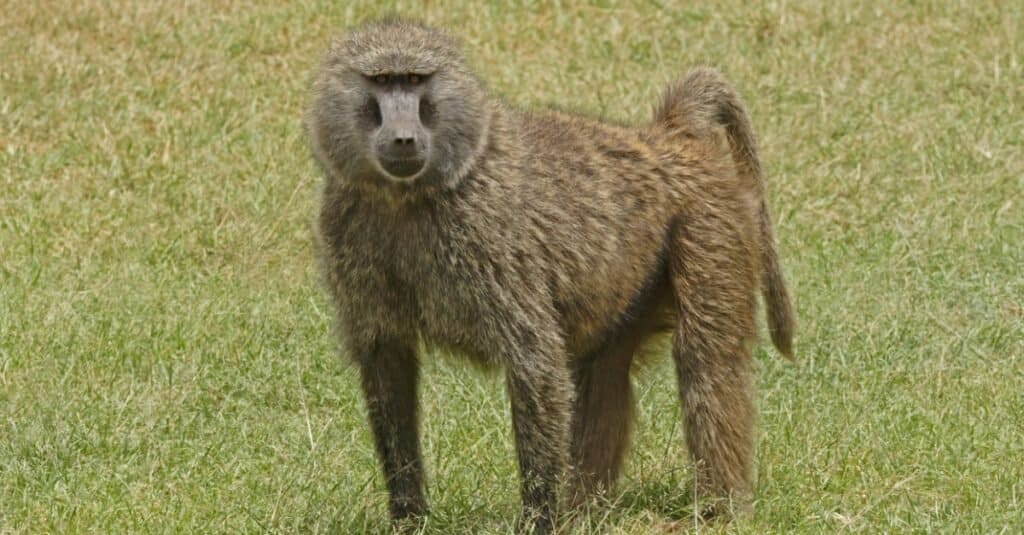
Olive baboons are Old World monkeys.
©iStock.com/neil bowman
The scientific name for ‘Old World monkeys’ is cercopithecids, part of the infraorder Catarrhini. They can be further divided into two subfamilies – the cercopithecines (which have check pouches) and the colonies (leaf-eating monkeys). Baboons, mandrills, macaques, rhesus monkeys, and proboscis monkeys are all Old World monkeys.
What Are New World Monkeys?

Capuchin monkeys are New World monkeys.
©Ondrej Prosicky/Shutterstock.com
The ‘New World monkey’ group includes five primate families: Callitrichidae, Cebidae, Aotidae, Pitheciidae, and Atelidae, and are in the parvorder Platyrrhini. There are more than 16 New World monkey species, including gracile capuchin, owl, howler, and saddle-back tamarin.
Old World Monkeys vs New World Monkeys: 7 Key Differences
1. Geographic Location
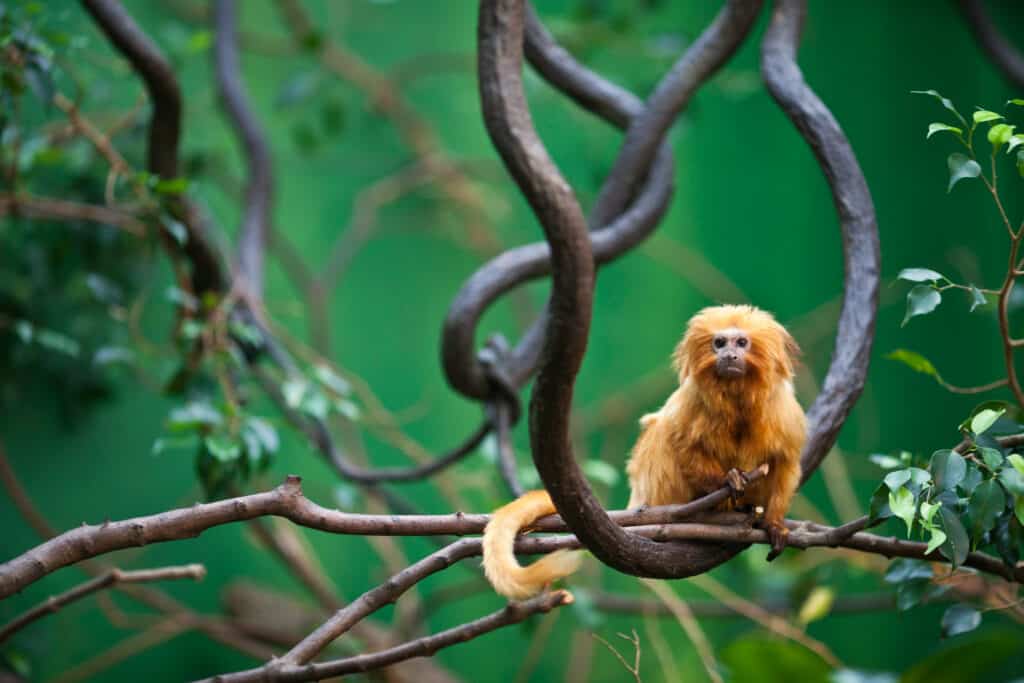
The Golden
Lion
Tamarin is a New World monkey species that lives in Brazil.
©iStock.com/jeancliclac
As you would expect, Old World monkeys live in what is referred to as the ‘Old World,’ comprising Europe, Africa, and Asia. New World monkeys live in the ‘New World,’ which is the Americas. However, their range is limited to the tropical forests of southern Mexico and Central and South America.
2. Preferred Habitat

Common
squirrel
monkeys are New World monkeys and live in trees.
©Laura Kathleen Lewis/Shutterstock.com
Nearly all New World monkeys are arboreal, meaning they are tree–dwellers found in rainforests. In contrast, Old World monkeys spend much more time on the ground. While a few species of Old World monkeys live in rainforests and climb trees, many more live in savannahs and mountainous regions.
3. Tail Anatomy
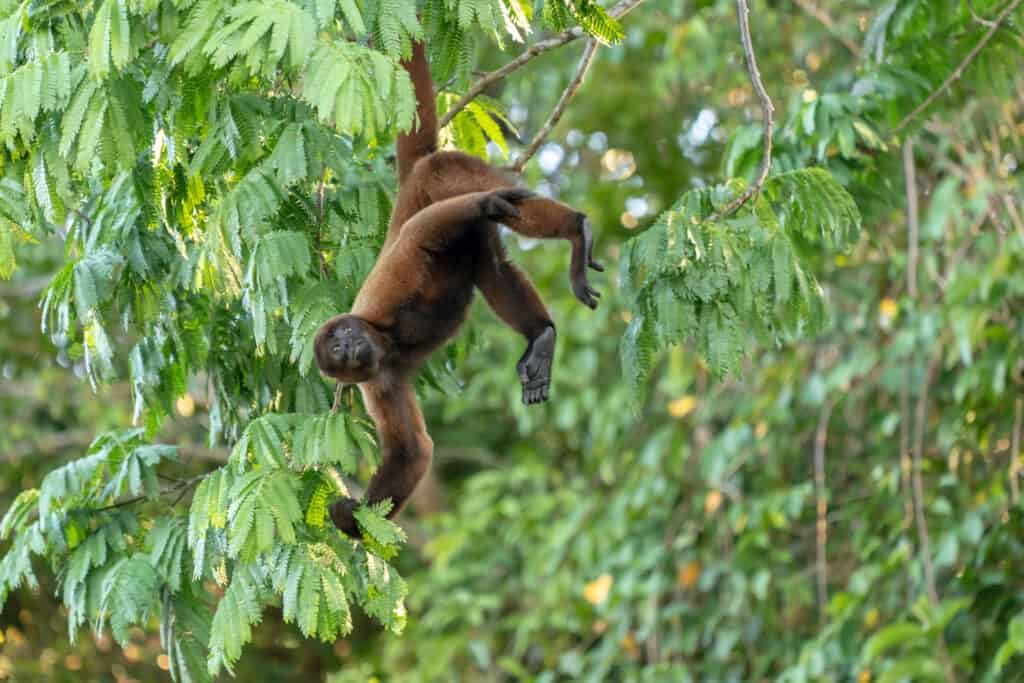
Brown woolly monkeys can hang from trees by their prehensile tails.
©Danita Delimont/Shutterstock.com
Most monkeys have tails, but they are used very differently by the two groups. New World monkeys often have a longer and prehensile tail. This means that it has adapted to grasp hold of objects. It is a common feature in arboreal (tree-living) animals because it helps to stop them from falling out of trees! In contrast, the Old World monkeys spend more time on the ground and do not need this type of tail. Their tail is non-prehensile, shorter, and cannot be used to grip anything.
4. Padded Buttocks

Rhesus Macaques are Old World monkeys and have pads of thickened tissue on their buttocks.
©iStock.com/Yoyochow23
Old World monkeys have pads of thickened tissue (calloused skin) called ischial callosities. They cover the part of the hip bones that they sit on. This is essentially their buttocks and makes it more comfortable to sit down when feeding or resting. New World monkeys do not sit down so often (and sleep in trees), so they don’t have them.
5. Nose Shape
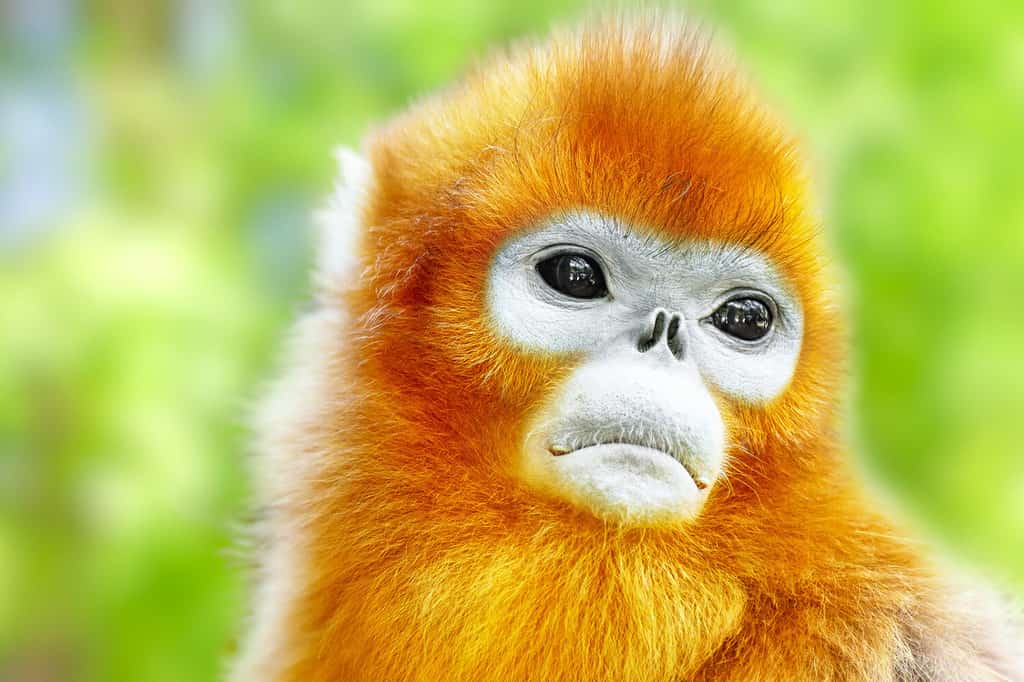
New World monkeys have narrow noses with nostrils that point forward or downward.
©V_E/Shutterstock.com
Old and New World monkeys have different face and nose shapes. New World monkeys rely more on their eyesight than their sense of smell, so their noses are shorter without the moist rhinarium (the hairless area around the nostrils that helps with scent). The nostrils are widely separated (there is a wide septum) and point sideways. Their eyes face forward, giving a larger region of overlapping vision, and they are better at moving their faces and communicating with facial expressions. Old World monkeys, on the other hand, have nostrils that are closer together (narrow septum) and point forward or downward.
6. Opposable Thumbs

Old World monkeys have opposable thumbs.
©Nicktopus/Shutterstock.com
The Old World monkeys have hands very like our own. They have opposable thumbs that can be moved freely and independently. They also have fingernails rather than claws. In comparison, only a few New World monkeys have opposable thumbs, including the tamarin and the capuchin monkeys.
7. Teeth
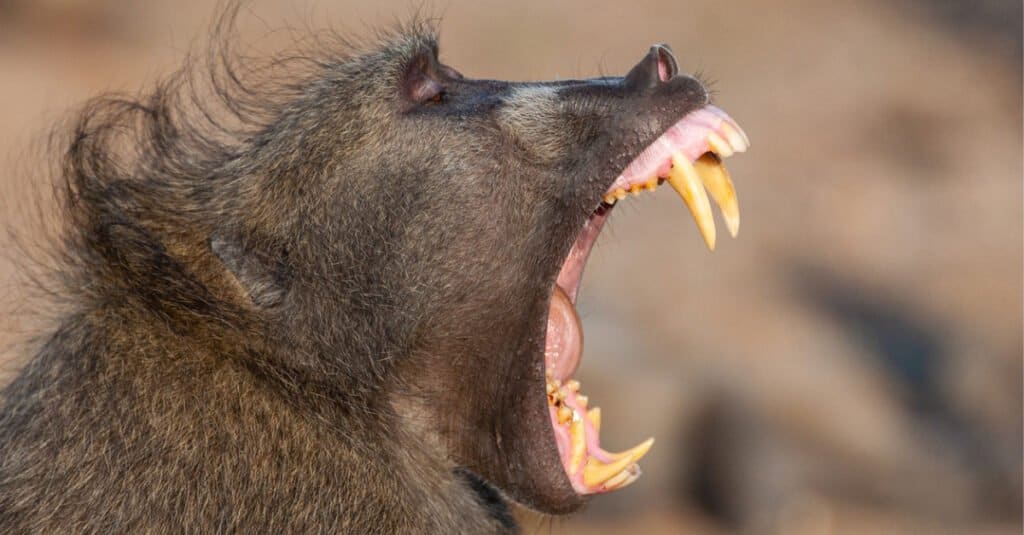
Old World monkeys have three molars.
©iStock.com/RudiHulshof
The layout of teeth does not vary significantly amongst the primates. They all have two incisors at the front of the mouth for biting off food. Then, there are canines behind those for piercing and tearing. Behind these are varying numbers of premolars and molars used to grind more fibrous food. New World monkeys have three premolars, usually two but occasionally three molars. In contrast, Old World monkeys always have two premolars and three molars. They share this dental arrangement with apes and humans.
Other Differences Between Old World and New World Monkeys
Some other differences between these two types of monkeys are generalizations and do not apply to every monkey. In general, Old World Monkeys are more significant than New World Monkeys. Also, they are herbivorous or omnivorous, whereas New World Monkeys tend to be frugivorous or insectivorous. Old World Monkeys tend to have a more extended gestation period.
Summary of old-world monkeys vs new-world monkeys
| Characteristic | Old World Monkey | New World Monkey |
|---|---|---|
| Geographic location | Europe, Africa, and Asia | The Americas |
| Preferred habitat | Mainly ground-living | Arboreal (tree-living) |
| Tail anatomy | Prehensile (can grip things) | Rarely prehensile |
| Padded buttocks | Sit on ischial callosities | No ischial callosities |
| Nose shape | Narrow nose and nostrils point forward or downward | Wide nose and nostrils point sideways |
| Opposable thumbs | Have opposable thumbs | Rarely have opposable thumbs |
| Teeth | Three molars | Two or three molars |
The photo featured at the top of this post is © Ludmila Ruzickova/Shutterstock.com
Thank you for reading! Have some feedback for us? Contact the AZ Animals editorial team.



